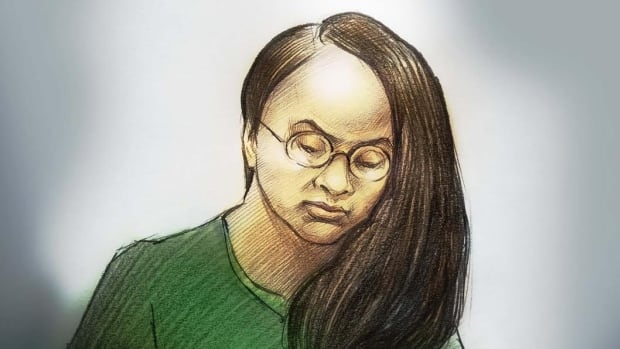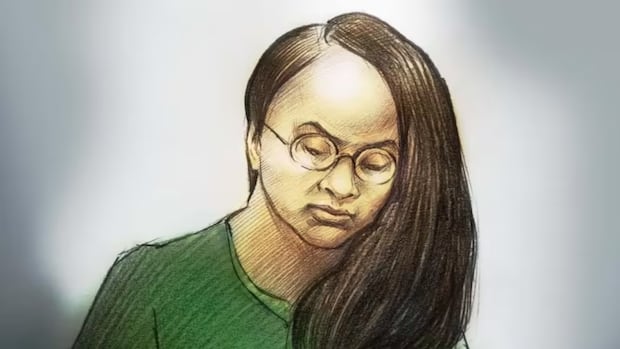
The most popular movie on Netflix Canada has resurfaced a dramatic murder-for-hire plot that shook an Ontario city in 2010.
The documentary What Jennifer Did explores the life of Jennifer Pan and the complicated events that led to her mother being killed and her father severely wounded in a Markham, Ont., case that was granted a new trial last year.
“The fact that it’s true, I would say it’s wilder than fiction. It’s a Hollywood script,” executive producer Jeremy Grimaldi told CBC Toronto’s Dwight Drummond. “But we always have to remember that it’s a tragedy.”
Pan had a difficult relationship with her strict and demanding parents, who had extremely high expectations for her and closely monitored her after-school activities. She and her friends believed they were controlling and restrictive.
Eventually, they caught her in a series of lies about graduating from high school, obtaining a pharmacology degree and volunteering at a children’s hospital. Secretly, she was also spending time with her then-boyfriend, Daniel Wong.
A murder-for-hire case in Markham, Ont., is the subject of a new true crime documentary on Netflix. ‘What Jennifer Did” dives into the case of Jennifer Pan, who was convicted in a murder-for-hire plot against her parents. CBC’s Dwight Drummond speaks to two of the documentary’s makers to learn more about the case.
During the trial, the Crown said Pan started plotting her parents’ murder after they forced her to choose between them and Wong. He also became implicated in the murder plot.
Pan testified that she had a poor relationship with her father, who was the “rule maker,” but was closer with her mother.
One night in November 2010, three men entered the house where she lived with her parents and shot them both multiple times, killing her mother and severely wounding her father, who escaped to a neighbour’s house with gunshot wounds in his face and shoulder, and would later go on to testify against his daughter.
Pan was initially assumed to be a victim of a home invasion, but police soon turned on her as a suspect, and a series of texts and phone calls between her and Wong appeared to reveal a plot to have the men kill her parents for $10,000.
‘The wrong message to take away’
The documentary is not sitting well with everyone.
Karen K. Ho, a business and art crime reporter in New York City who went to school with Pan and Wong, wrote an article for Toronto Life in 2015 that detailed the complexities of the case and Pan’s family dynamic, emphasizing the pressures placed on Pan and other children of immigrant families.
Ho’s article has been rehashed on true crime podcasts and received a new wave of attention since the documentary came out Wednesday.
She says she is uncomfortable with the “true crime industrial complex” and what she called American audiences’ “all-consuming and endless” appetite for content about murder.
“I am not watching it and I’m choosing not to watch it, because I do not want to incentivize the further production of this stuff, without at least really thoughtful consideration.”
Here and Now Toronto10:46Markham murder inspires Netflix documentary
In 2014, Markham’s Jennifer Pan was found guilty of both first-degree murder and attempted murder for her parents. The story shook the city, while making international headlines, and today it’s getting the documentary treatment. “What Jennifer Did,” is now streaming on Netflix. Jeremy Grimaldi is the film’s Executive Producer, and Paul Nguyen is a Co-Producer on “What Jennifer Did.” They were on the show.
She says true crime’s primary audience is white Americans, and the documentaries are primarily produced through a white lens. She says she was not surprised that Pan and her father declined to speak on camera, or that the documentary relies heavily on interviews with, and footage from, police.
Ho says she would like to see the money for true crime documentaries flow toward work that focuses on systemic issues, rather than personal stories, and specifically applauds the work of Cree journalist Connie Walker, of the Okanese First Nation in Saskatchewan, and her reporting on missing and murdered Indigenous women.
“The over-emphasis on personal responsibility, versus systemic issues, is the wrong message to take away,” Ho said.
While Ho says her 2015 article aimed to cover the case in a nuanced and non-exploitative way, she remembers receiving backlash at the time, and accusations that she was “capitalizing on a family’s worst day of their lives.”
Hopes for healing, understanding
Co-producer Paul Nguyen says director Jenny Popplewell reached out to him two years ago to help connect with members of Markham’s Vietnamese community for What Jennifer Did.
“I can relate, being a Vietnamese person, second-generation and having pressures from my own parents. And sometimes it hurt me and upset me a lot, but I wouldn’t resort to something like this,” Nguyen told CBC Toronto.

(Pan and her family are ethnically Chinese, but her parents came to Canada as refugees from Vietnam.)
He says mental health issues are “a very taboo subject in Asian communities.”
“I just hope that the dialogue can happen and have more healing and people can come to the understanding and avoid these kinds of situations.”
Pan was sentenced in 2015, at age 28, to life in prison with no parole for 25 years for first-degree murder and attempted murder. Her co-accused — Wong, Lenford Crawford and David Mylvaganam — received the same sentence.
The Ontario Appeal Court ordered in May 2023 a retrial for the four for the first-degree murder charge. Their lawyers argued in part that it was unfair for the judge to only present two options to the jury: That the attack was either planned and deliberate, with the intention to murder both parents, or that the attack arose as part of a home invasion and robbery gone wrong.
Grimaldi, also a crime reporter who covered Pan’s trial and wrote a book about the case, says he hopes the documentary makes people reconsider the judgments they may have made about Pan at the time.
“She was really made out to be the daughter from hell. In fact, that was a front page of the Toronto Sun, ‘Daughter from Hell,'” he said.
“Now, with a bit of time, we can look back and see it’s maybe a bit more of a nuanced story and that it’s more complex.”
